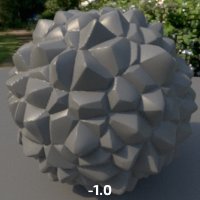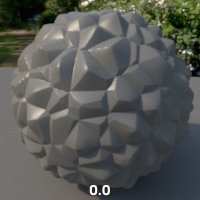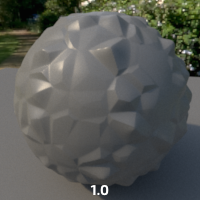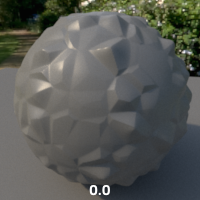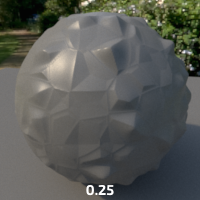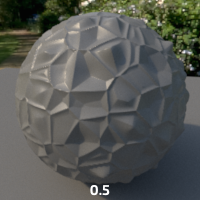...
If you want your displacement and shading patterns to match, use the Undisplaced Position.
| Before After Image Slider | ||||||||
|---|---|---|---|---|---|---|---|---|
|
Frequency
Controls the size of the cells. Higher frequencies make smaller cells.
...
| Note |
|---|
Minkowski is more expensive than the other distance metrics, but it is fine for displacement as you will pay the cost only once when the geometry is displaced. |
Jitter
Controls the distortion of the cells.
...
Makes the distance transition smoothly from Manhattan (1.0) to Euclidean (2.0) to weird un-explored territories.
...
Shape
Modifies the computed distances to create different shapes. The example below uses c1 = 1.0 and c2 = 0.0.
...
c1: 1.0 c2: -0.95 distancemetric: Euclidean
...
Invert
Inverts the final pattern.
...
Random Scale
This will randomly scale the features' amplitude and give a slightly more regular appearance.
Random Scale Center
This is applying a an offset to the signal before applying the random scale. Use this to create more variations.
Manifold
...
Adjust Output
Color Scale
A multiplier for the color values in a texture, can be used to adjust brightness or manipulate individual color channels
Color Offset
Apply an offset to the result, shifting the colors of the result
Alpha Scale
A multiplier for the alpha channel, useful when the alpha is used to drive a parameter
Alpha Offset
An offset for the alpha channel, useful when the alpha is used to drive a parameter
Output Parameters
resultF
The result of Worley noise texture.
...



